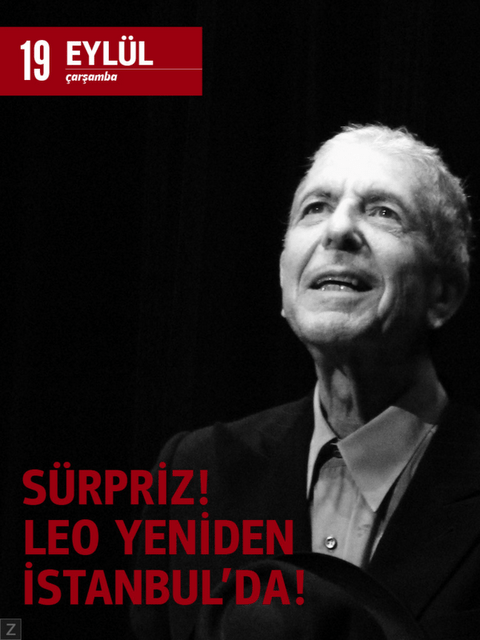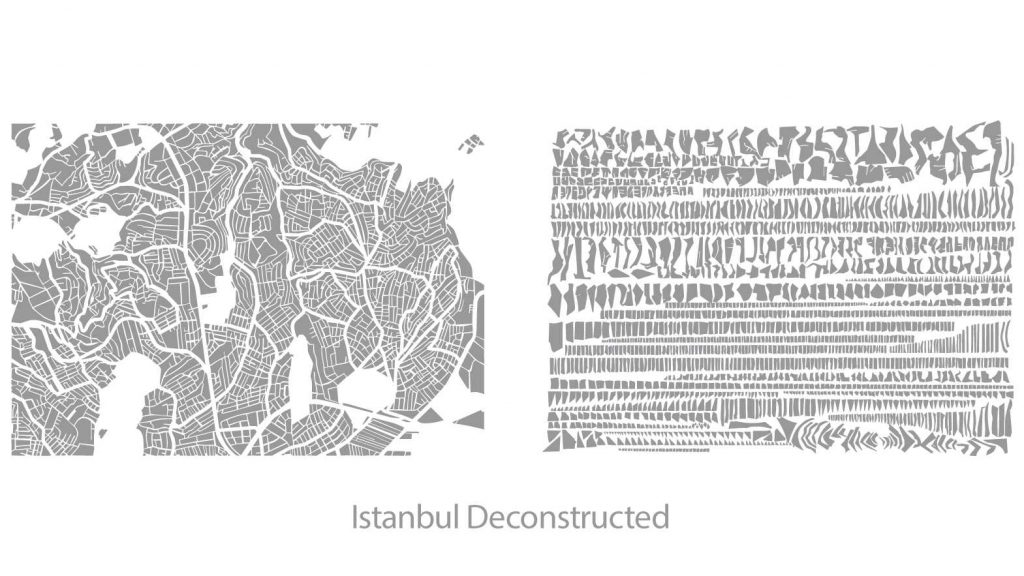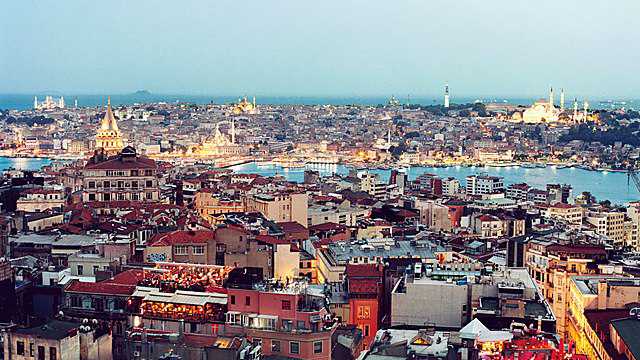Esquire travelled to Istanbul for an exclusive Skyfall set visit.
Almost 50 years after he last visited the city, for From Russia With Love, British Intelligence’s globetrotting assassin is back in Istanbul for next month’s Skyfall. In an exclusive report from the set, Stephen Smith witnessess the making of a very Modern 007.
–
When James Bond flew to Istanbul on assignment in Ian Fleming’s From Russia with Love, he carried a “slim, expensive-looking [Swaine Adeney Brigg] attaché case”. It had been modified to conceal 50 rounds of .25 ammunition, 50 gold sovereigns, two flat throwing knives, a silencer hidden in a tube of Palmolive shaving cream and a cyanide “death-pill” (which he immediate flushed down the lavatory).
When I flew to Istanbul to report from the set of the new James Bond film Skyfall, I carried a richly storied Millets rucksack — carefully selected to hold 200 rounds of 297 mm paper in a navy A4 notepad, £50 in Turkish liras, a pair of gripping ballpoints and a phial of Factor 30 sun lotion (which I immediately mislaid at the gate).
Yes, I had the edge over Bond in the luggage department, alright. Not only was I travelling light, but my gear was calculated to raise no suspicions among airport officials. By contrast, as 007 acclimatised himself to his propeller-driven BEA Viscount (“Bond unfastened his seat-belt and lit a cigarette…”), he was relieved the check-in girl allowed him to take his groaning valise on board without weighing it, and wondered how Customs would have reacted if, stitches popping, the bag had been “slipped under the inspectorscope” instead.
James Bond has seen a few changes since he first started travelling for work, but one constant has been the high-end accessories: high-end, if sometimes impractical. You could set your Rolex Oyster by the quality and tone of his fixtures and fittings. Not just the well-documented handmade threads and bespoke drinks, not only the customised cars and personalised piece, but indeed the whole damn shooting match. His job calls for discretion and lightning-fast results, but Fleming has him embarking on an assignment as if he were a pith-helmeted explorer.
Like William Boot, Evelyn Waugh’s haplessly encumbered foreign correspondent in Scoop, Bond sets out with cabin trunks and a sedan chair, or might just as well do. In this, his creator was subconsciously recalling the archetype of the 19th century expeditionary — the planter, the viceroy — who really did go out and boss the world. But scholars of the texts note that the author also groomed and equipped his protagonist in the manner Fleming, a genuine toff, was accustomed — hence the monogrammed tabs and the toiletries from St James’s.
At a stroke, Fleming single-handedly created the airport novel, ushering in its pedantic branding and the product placement which stands in for characterisation. Here was the real genius of the Bond franchise — yes, there were the villains; yes, the girls; and, of course, the enigma of the titular hero himself. But 007 is really a chameleon and a chimera, shape-shifting and sloughing off his skin. No, the true secret of this secret agent’s success was the kit — and the travel.
Fleming’s thrillers, together with other classic English crime and adventure yarns, have been described by the critic Colin Watson as “snobbery with violence”. But the Bond stories are actually holidays with violence. The recurring male fantasy of Bond is a holiday from reality in itself. We might baulk at the actual derring-do, but we quite fancy giving it a go the last week in July and the first week in August, especially once we refresh ourselves as to the itinerary — the Caribbean; romantic spa breaks in boutique hotels made entirely from ice; Istanbul…
Ah yes, Istanbul! As well as visiting a major Skyfall location, I had an appointment with the man who is effectively Bond’s travel agent — he makes sure the trunks are packed and the bearers are booked — though he is more, much more, besides. He is an enabler of dreams, Bond’s real quartermaster (unlike that charlatan Q who appears in the movies).
It’s no exaggeration to say that this man makes the weather for Bond, as well as for the millions of us who follow his adventures, a knack which comes in handy when the real weather fails to oblige. Why, on this very production, my high-level contact had grappled with the worst man and the elements could throw at him, including the bankruptcy of the MGM studio, so long associated with Bond’s body of work, as well as nature at her most terrible and capricious: a cyclone on set!
From time to time, the fastidious Bond likes to slum it. In From Russia with Love, we read of his “perverse liking for the sleazy romance that clings to old-fashioned Continental hotels”. In Istanbul, he checks into the Kristal Palas, where he has colourful encounters with dubious foreigners. A charming, if not politically correct, and, of course, laughably fanciful, view of what really goes on in this bustling entrepôt. Or so I explained to my companion, a solitary Slovenian sitting up late with me at the rooftop bar of our hotel.
Below us, the lights of the ships were winking on the inky Bosphorus. The other man merely grunted, and slid his glass of oily raki across the table towards me. “You must try,” he barked, and a short time later, the lights in the bay seemed to buck and twist, like the golden chain on a belly dancer’s navel…
That night, I dreamt that Bond, looking more than ever as though his burly jaws had been wired together, was squiring a statuesque brunette towards a 4×4 through an honour guard of photographers. Morning found me cabbing it groggily across town to my rendezvous with the movie people in the old port quarter. The taxi pulled up before a chicane of crush barriers in Eminönö Square and the driver exclaimed “James Bond!” The glamour and excitement of the shoot had touched Istanbul, and the dream I had was really a video clip, playing continuously on local news, of Daniel Craig enjoying his downtime in the city with his wife Rachel Weisz.
The railings had been thrown up around the outsize condiment set — the salt and pepper pots, the sugar-shakers — of a 16th century mosque, known in this long-in-the-tooth town as the New Mosque. In the shadow of its minarets was an unassuming street market, in all its plenty and variety: the heaped produce, the still-life compositions of flesh and fish, the bolts of gaily-coloured cloth. The one incongruous note, which struck even a newcomer to Istanbul like myself, was the rear end of a black Audi A5, which rose monstrously above the stacked trestles like a freshly caught whale steak.
Double-07: Craig clings to a storage container while shooting a Skyfall scene (the other Craig? That’s his stunt double)
Perhaps the cyclone which had whirlygigged through the port some days earlier had snatched the car up and carelessly tossed it aside? No, it seemed the script had called for an Audi to bury itself in locally sourced goods. In fact, the script called for not one but 15 A5s to be written off or otherwise ill-used around the city, all for the sake of a spectacular chase sequence, which would require the services of 500 extras and 300 crew. Not only that, but the street market in front of me was drawn entirely from the palette of the Skyfall designers: on-site chippies had knocked up every stall.
There was further evidence of east meeting west, indigenous artisanal traditions with the craft skills of an international film crew, at the ninth century Kapalıçarşı, the Grand Bazaar. Within the colonnaded passages of this extraordinary labyrinth is the greatest shopping mall of the ancient world. A survey in 1880 found it was home to 4,399 shops, 2,195 ateliers, 497 stalls, 12 storehouses, 18 fountains and a dozen mosques. “The number of commercial establishments would appear to be about the same now,” according to the definitive Strolling through Istanbul by Hilary Sumner-Boyd and John Freely. “It is a small city in itself.”
Beneath its flaking arches, on plangently-named avenues such as the Street of the Turban-Makers and the Street of the Aga’s Plumes, the Ottoman and Byzantine strands of Istanbul’s history are braided together like the skeins of smoke from a hookah.
With a confidence and a sense of mission those ancient empires would salute, the Bond people had taken over the Grand Bazaar from its costermongers, porters and pedlars, only to tag them with backstage wristbands and hire them back as extras. In an atmosphere redolent of camphor and the musk of feral cats, shortish men in dense brown suits stood about sipping sweet coffee while their immemorial place of work became the province and plaything of blokes in shorts.
These were chaps from Kent and Essex steeped in the values of the cinema. And their shorts were the instantly recognisable tunic of the fitter and the spark, hung with walkie-talkies and crocodile clips, with lariats of gaffer tape. One rigger, was window-shopping at a crockery stand, a jaunty sombrero slung across his shoulders. A well-preserved stallholder looked on with a sultan’s self-assurance from beneath the hanging garden of his hairpiece.
On this thoroughfare hung with brightly painted plates, lamps, bangles, and T-shirts, the honest freemasonry of the soul, and the brotherhood of the clapperboard and the Klieg light, came face to face with one another, and recognised a little of themselves.
As if unsettled by the absence of the Grand Bazaar’s customary haggling, a knot of tradesfolk had sought out the compact Craig — his hair cut downy-short at the back, a suggestion of silver in the thread of his tight-fitting suit, a black earpiece snug in one lobe. Craig was generously indulging an old boy who wanted to show the famous actor his collection of black and white snaps, perhaps of the first shoot a Bond team had carried out in his city.
Cinematographer Roger Deakin, left, and director Sam Mendes, right, watch over Judi Dench (Bond’s maternal taskmaster M)
That was 49 years ago, almost to the day, when Sean Connery was filming From Russia with Love, negotiating the Stygian lagoon of the underground Basilica Cistern built by the Roman Emperor Justinian. Elsewhere, members of the crew were attending to a quad bike throbbing under a camera rig. A short distance ahead of it in the thronged passageway, a stuntman, wearing the same suit as Craig’s, was gunning the throttle of a motorbike, leaning over the high-kicking suspension of its front wheel.
Around me, shoulders tensed, earphones chattered, timecode raced across the bottom of a monitor and, at a command I couldn’t make out, as it rang back from the high cornice of the Grand Bazaar, the motorbike sprang forward through cleaving columns of tradesmen, pursued by the roaring quadbike. Many man-hours would be spent nailing this shot, and like an exercise in testing the domino effect to destruction, one element of this city-wide game of KerPlunk would knock on mesmerisingly into the next.
This was all in the service of a heavily redacted screenplay which, as far as I could establish by means of my own black ops, centred around Bond going underground in order to fight for the reputation of British intelligence — perhaps even its survival.
Another cliffhanger was hidden in the pages of the Skyfall call-sheet. For the elaborate daisy-chain of action in Istanbul had been months in the planning and weeks in the shooting, with costly principals, including Craig himself, flown in to add their clinching contributions over a matter of a few carefully story-boarded days.
This, as well as absolutely everything else, was the responsibility of the lean 70-year-old whom I met in a side-alley of the Grand Bazaar. Michael G Wilson has been a scriptwriter, a cameo performer, and for more than 30 years, producer of the Bond movies.
“Just a little shot like this,” he said, craning his neck toward the TT course behind us. “Well, it takes an enormous amount of planning. You have to persuade all the owners of the shops to come in here on a Sunday, their day off, and open them up and dress them, then you need your crowd, you have 45 stunt people in that alleyway alone, and you have to make sure everybody gets out of the way of the bikes. And this is for the sake of a tiny bit of film, in terms of screen-time.”
I said, “Did you notice the extra with the wig? You could have that blow off as Bond drives past him.”
“I’ll give that some thought,” replied an openly grateful Wilson. “You know, for fun, I was looking back at the paperwork from when Bond was here last time, almost half a century ago, and things did seem a lot simpler then. But it’s always been a kind of complex and difficult operation. Now we have more effects we can play with, and expectations are higher. The public always demands more excitement.”
The Skyfall stunt drivers went through 15 Audi A5s while filming in Istanbul
Wilson is the stepson of the legendary Albert R “Cubby” Broccoli, the man credited with turning Fleming’s thrillers into box office catnip, and these days he shares production chores with Broccoli’s daughter, Barbara. He said, “I was a student when my stepdad was making Goldfinger. I went to visit him when they were shooting at Fort Knox.
He said he could use an assistant and I wound up working on that movie for three weeks. Sometimes they needed film doubles, so I doubled Bond, then I was a Korean at Pussy Galore’s Flying Circus. It became a kind of tradition, and there just seems to be a moment in each film when I do a little tiny bit.”
Long nights over a box-set will confirm that Wilson moonlights as a gondolier in Moonraker, also the first of his production credits. He has also essayed the roles of a Greek Orthodox priest (For Your Eyes Only), a Soviet apparatchik (Octopussy), an opera buff (Living Daylights) and casino whale (The World is Not Enough). But these are mere squibs, an in-joke.
The plain fact is that Wilson is the impresario and actor-manager of the Bond repertory company. He barks up the money, handles the talent, wrangles the snafus. If anyone can be said to be running agent 007 the way Fleming did, it’s Michael G Wilson.
But wasn’t he afraid that the Bond narrative arc was beginning to strain credulity — a Brit who saves the world? Our day was done, surely.
“Look,” said Wilson, “whenever the United States gets involved someplace, the British are right there with them. And let me tell you that we have spoken, informally, to British special forces, past and present. They advise us, if you will. And they are still very active, you know, behind the scenes. So Bond isn’t so far-fetched as you may think.”
Bond lives! I had glimpsed his spymaster pulling the levers and turning the knobs. If I had understood Wilson correctly, the long-running 007 character was rebooted by the insights of bona fide spooks. But who was this Bond, exactly? He wasn’t Fleming’s creature, that was for sure.
Wilson said, “Fleming’s idea of Bond was a much more polished character than the one who appears in the films. He was thinking of a David Niven, public school, type. But the film rights were acquired by Harry Saltzman and ‘Cubby’, they were American, they wanted a more robust figure in the role. It wasn’t that Bond ceased to be British, but it was another facet of Britishness.”
Separated by 49 years, Craig films under the same Istanbul skyline as Sean Connery in 1963’s From Russia with Love
It was true, of course. Privately, I pined for Fleming’s sophisticated — or perhaps merely fussy — 007, the one who knew his own mind on all the decisions a man has to make. Not only about such trifles as guns and lovers, but also about the really useful stuff: how do you instruct your housekeeper to prepare your eggs? Which marmalade do you spread on your soldiers? (For the record, the answers are: boiled for three-and-a-half minutes, and Frank Cooper’s Vintage Oxford.) Fleming’s Bond is as finicky as a medieval caliph who doesn’t trust his food taster. Christopher Hitchens, a fan, recognised the spy’s “bachelor affectations about eggcups and marmalade”, but felt they didn’t diminish his panache, “if only because one had the sense that he could, and often did, live without them.”
Just at that moment, as if he had read my mind, Bond himself re-entered the scene. Striding towards me and his producer, Craig quipped, “Give him hell, Michael!” It was good-natured banter, but would this Bond know his way around a breakfast tray? I frankly doubt it.
In a few minutes, on a closed set, Craig would be relieving his body-double of that prancing, neighing motorbike, and riding a few hot-blooded metres on it himself. But first — and it was a lovely gesture — he was popping into one of the shops of his newfound buddies, the boys from the Grand Bazaar. James Bond was going souvenir-hunting.







